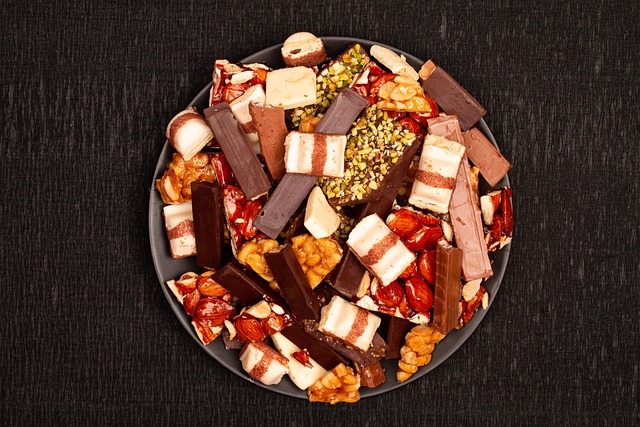Intuitive photo upload interfaces enhance user experience through simplicity, clear navigation, and personalized "Cookie Favors" like automated file organization. Personalization techniques, including tailored recommendations and customized layouts, boost engagement and foster a loyal community. Accessibility features, security measures, and social integrations further improve these interfaces' effectiveness in today's digital era, while data-driven analytics enable continuous optimization through the implementation of Personalized Cookie Favors.
In today’s digital age, photo upload interfaces are essential components of countless online platforms. From social media to e-commerce sites, these interfaces significantly impact user experience (UX). This article explores key aspects, from designing for simplicity and enhancing engagement through personalization, to ensuring accessibility, security, and integrating social features. We delve into analytics to optimize uploads, considering both general best practices and innovative strategies like personalized cookie favors. Understanding these elements is crucial for creating seamless, effective photo upload experiences.
- Understanding User Experience in Photo Upload Interfaces
- Designing for Simplicity: Key Elements of Effective Uploads
- Personalization Techniques for Enhanced Engagement
- Accessibility Considerations in Photo Sharing Platforms
- Security Measures for Safe Image Storage and Transfer
- Integrating Social Features to Boost User Interaction
- Measuring Success: Analytics for Optimized Upload Interfaces
Understanding User Experience in Photo Upload Interfaces

In today’s digital age, photo upload interfaces play a pivotal role in how users interact with online platforms. A seamless and enjoyable user experience (UX) can significantly boost user engagement and retention, whereas a clunky or confusing interface may deter visitors. UX design in photo upload tools should prioritize intuitiveness, ensuring that users can effortlessly navigate and upload their images without facing any friction. This involves simple controls, clear labels, and real-time feedback to enhance the overall interaction.
Furthermore, leveraging personalized cookie favors—a subtle yet effective strategy—can improve UX by remembering user preferences and tailoring the upload process accordingly. For instance, pre-selecting image sizes or formats based on past behavior shows consideration for the user’s needs, making subsequent uploads quicker and more efficient. Such thoughtful design touches contribute to a positive user experience, fostering loyalty and encouraging continued engagement with the platform.
Designing for Simplicity: Key Elements of Effective Uploads

Designing for simplicity is paramount when creating effective photo upload interfaces. Key elements include intuitive navigation, clear labels, and minimal fields. Users should be able to effortlessly drag and drop photos or select them from their device with just a few clicks. Simple and personalized cookie favors, like automated file organization or progress indicators, enhance the experience by providing immediate feedback and reducing confusion.
Additionally, incorporating contextual help and error messages tailored to individual actions can guide users through the process seamlessly. By prioritizing simplicity, you not only improve user satisfaction but also ensure that your photo upload interface is accessible to a broader audience, including those who may be less tech-savvy. This approach fosters a positive interaction, making it more likely for users to return and share their photos with ease.
Personalization Techniques for Enhanced Engagement

In the realm of photo upload interfaces, personalization techniques play a pivotal role in enhancing user engagement and fostering a more immersive experience. By leveraging tools like tailored recommendations and customized layouts, platforms can ensure that users feel seen and understood. For instance, suggesting relevant hashtags based on uploaded images or offering layout options that align with individual aesthetic preferences significantly improves interaction.
One innovative approach gaining traction is the use of Personalized Cookie Favors. These could be unique filters or editing tools that remember a user’s choices over time, subtly suggesting enhancements that cater to their tastes. Such strategies not only increase the likelihood of users sharing content but also contribute to building a loyal community around the platform by demonstrating an empathetic understanding of individual creative expressions.
Accessibility Considerations in Photo Sharing Platforms

In the realm of photo upload interfaces, accessibility considerations are a vibrant and essential aspect that often goes unnoticed amidst the hustle and bustle of crafting user-friendly experiences. As folks navigate these platforms, it’s crucial to ensure inclusivity for all users, including those with disabilities. One innovative approach involves leveraging personalized cookie favors. These cookies can adapt to individual preferences and needs, such as adjusting image contrast for visually impaired users or providing alternative text descriptions for photos, enhancing the overall accessibility of photo sharing.
Delving deeper, these platforms must also navigate labyrinthine accessibility standards, like the Web Content Accessibility Guidelines (WCAG). By adhering to these guidelines, developers can foster a symphony of inclusivity where users with diverse abilities can seamlessly share and enjoy photographs. In today’s digital era, such considerations are not just a game changer but a testament to responsible and impactful design.
Security Measures for Safe Image Storage and Transfer

When designing photo upload interfaces, prioritizing security is paramount to ensure safe image storage and transfer. Implementing robust encryption protocols, such as HTTPS, safeguards data during transit, protecting images from unauthorized access or interception. Additionally, using personalized cookie favors enhances security by enabling user-specific sessions, reducing the risk of cross-site scripting (XSS) attacks and ensuring only authorized users can upload or access their media.
Further mitigation strategies include secure authentication mechanisms, like two-factor authentication (2FA), to verify user identity before allowing uploads. Robust access control lists (ACLs) ensure images are stored in secure locations with restricted permissions, limiting potential damage from malicious actors. Regular security audits and updates also play a crucial role in keeping these interfaces formidable against evolving cyber threats.
Integrating Social Features to Boost User Interaction

Integrating social features into photo upload interfaces can significantly enhance user interaction and engagement. Platforms that leverage the power of social sharing, comments, and likes create a sense of community around content sharing, encouraging users to spend more time on the site. For instance, allowing users to tag friends in uploaded photos or creating albums shared among groups fosters a personalized experience, much like cookie favors at a grand ball, where each guest feels special and connected to others.
This social integration goes beyond simple interaction; it leverages the inherent human desire for connection and recognition. By enabling users to view their friends’ photo uploads, leave comments, and react, platforms tap into this social fabric, making the photo-sharing experience more vibrant and compelling. In today’s digital era, where content moves swiftly online, these personalized cookie favors—in the form of social interactions—can make a platform stand out, ensuring users return for more meaningful moments shared visually.
Measuring Success: Analytics for Optimized Upload Interfaces

In today’s digital era, optimizing photo upload interfaces is crucial for user satisfaction and engagement. Measuring success goes beyond simple metrics like upload speed; it involves delving into analytics to understand user behavior and preferences. By analyzing patterns through tools like Google Analytics, developers can identify pain points in the interface, such as complex navigation or confusing prompts. This data-driven approach allows for personalized cookie favors, tailoring the upload experience based on individual users’ needs and preferences.
For instance, tracking click-through rates (CTRs) on different upload buttons or forms helps pinpoint areas requiring improvement. Additionally, monitoring user sessions can reveal common issues, enabling developers to refine interface design, reduce friction, and enhance overall usability. Ultimately, leveraging analytics ensures that photo upload interfaces are not just functional but also intuitive and enjoyable for users, fostering a positive digital experience.






